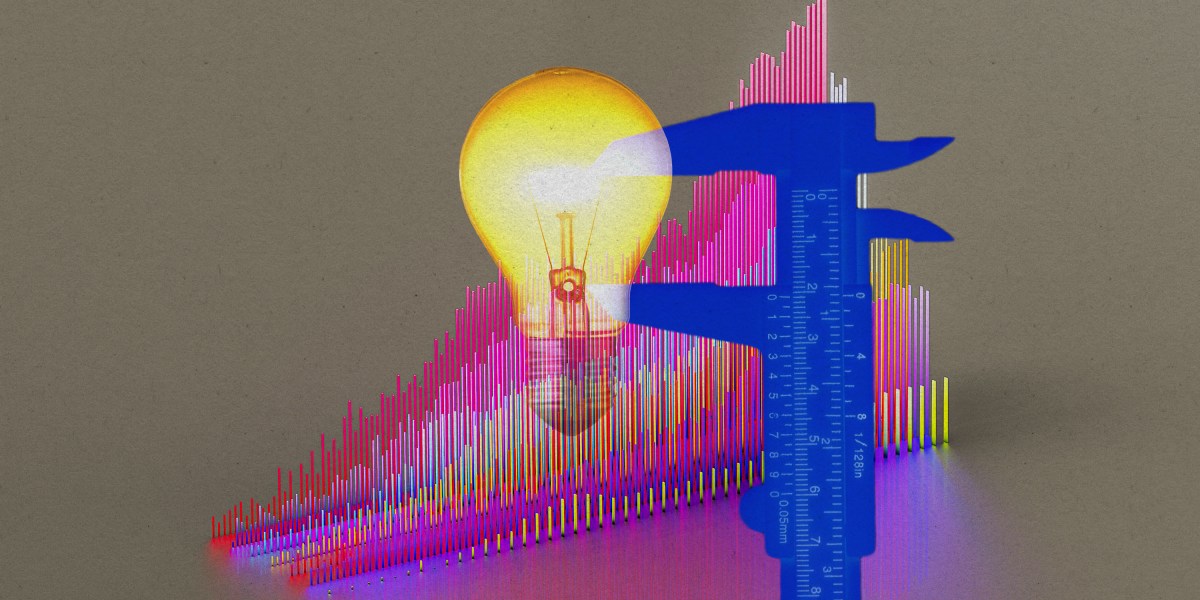This is today’s edition of The Download, our weekday newsletter that provides a daily dose of what’s going on in the world of technology.
See the stunning first images from the Vera C. Rubin Observatory
The first spectacular images taken by the Vera C. Rubin Observatory have been released for the world to peruse: a panoply of iridescent galaxies and shimmering nebulas.
Much has been written about the observatory’s grand promise: to revolutionize our understanding of the cosmos by revealing a once-hidden population of far-flung galaxies, erupting stars, interstellar objects, and elusive planets. And thanks to its unparalleled technical prowess, few doubted its ability to make good on that. But over the past decade, during its lengthy construction period, everything’s been in the abstract.
Today, that promise has become a staggeringly beautiful reality. Read the full story.
—Robin George Andrews
Back in January, we selected the Vera C. Rubin Observatory as one of our 10 Breakthrough Technologies of 2025. Read more about why it’s such a promising tool for enhancing our understanding of the universe.
Why we need to think differently about privacy
Privacy only matters to those with something to hide. So goes one of the more inane and disingenuous justifications for mass government and corporate surveillance. It remains a popular way to rationalize or excuse what’s become standard practice in our digital age: the widespread and invasive collection of vast amounts of personal data.
One common response to this line of reasoning is that everyone, in fact, has something to hide, whether they realize it or not. If you’re unsure of whether this holds true for you, three new books examine the rise of the surveillance state, its infiltration of higher education, and why we need a new framework for thinking about privacy. Read the full story.
—Bryan Gardiner
This story is from the next print edition of MIT Technology Review, which explores power—who has it, and who wants it. It’s set to go live this Wednesday, so subscribe & save 25% to read it and get a copy of the issue when it lands!
The must-reads
I’ve combed the internet to find you today’s most fun/important/scary/fascinating stories about technology.
1 Satellite images reveal the damage America’s bombs caused in Iran
The attack focused on three nuclear sites in the country. (Wired $)
+ Iran has insisted its nuclear program will not be stopped. (The Guardian)
+ Here’s how the US bunker-busting bombs work. (Economist $)
+ The risks of a nuclear accident appear low, for now. (New Scientist $)
2 Tesla has launched its Texas robotaxi service
But for now, at least, it’s pretty restricted. (NYT $)
+ Elon Musk says the firm is “super paranoid about safety.” (WP $)
+ But there’s still plenty of unanswered questions around how it’ll work. (TechCrunch)
3 OpenAI and Jony Ive’s startup are facing a trademark dispute
It appears to be over their use of the IO name. (Bloomberg $)
+ OpenAI has scrubbed all mention of the partnership online. (Insider $)
4 Meta is throwing tens of millions of dollars at top AI talent
Mark Zuckerberg is on a personal mission to recruit for its Superintelligence lab. (WSJ $)
+ Alexandr Wang of Scale will lead the charge. (Fortune $)
5 Elon Musk wants to retrain xAI’s Grok
Foundation AI models contain too much garbage, apparently. (Insider $)
+ Investors aren’t keen to sink money into xAI. (Reuters)
+ Why does AI hallucinate? (MIT Technology Review)
6 Donald Trump’s phone network is based in Florida
Seven-year old Liberty Mobile Wireless buys network capacity from bigger players. (FT $)
7 Reddit is reportedly considering using World ID to verify users
The controversial firm claims to preserve users’ anonymity while also confirming they are human. (Semafor)
+ How the startup recruited its first half a million test users. (MIT Technology Review)
8 What happens inside the phones of 25 teenagers
Life isn’t always easy for the first generation of social media natives. (The Guardian)
+ What it’s like to have never owned a smartphone. (The Atlantic $)
+ How to log off. (MIT Technology Review)
9 A dead NASA satellite let off a powerful radio pulse 🛰️
So powerful, it briefly outshone everything else in the sky. (New Scientist $)
10 What does AI mean for the future of fonts?
They could eventually swim into focus, or shift during the day. (The Verge)
Quote of the day
“We’re not playing a kid’s game here. We’re not naming Care Bears.”
—Ira Winkler, chief information security officer at cybersecurity firm CYE Security, decries cybersecurity’s obsession with cutesy names to the Wall Street Journal.
One more thing
What is death?
Just as birth certificates note the time we enter the world, death certificates mark the moment we exit it. This practice reflects traditional notions about life and death as binaries. We are here until, suddenly, like a light switched off, we are gone.
But while this idea of death is pervasive, evidence is building that it is an outdated social construct, not really grounded in biology. Dying is in fact a process—one with no clear point demarcating the threshold across which someone cannot come back.
Scientists and many doctors have already embraced this more nuanced understanding of death. And as society catches up, the implications for the living could be profound. Read the full story.
—Rachel Nuwer
We can still have nice things
A place for comfort, fun and distraction to brighten up your day. (Got any ideas? Drop me a line or skeet ’em at me.)+ Have you booked your tickets to 28 Years Later yet?
+ If you happen to be planning a flying visit to Rome, here’s a guide to cramming in as much of its breathtaking art as possible.
+ What community gardens can give us.
+ Who really runs New York? The bodega cats ($)






















